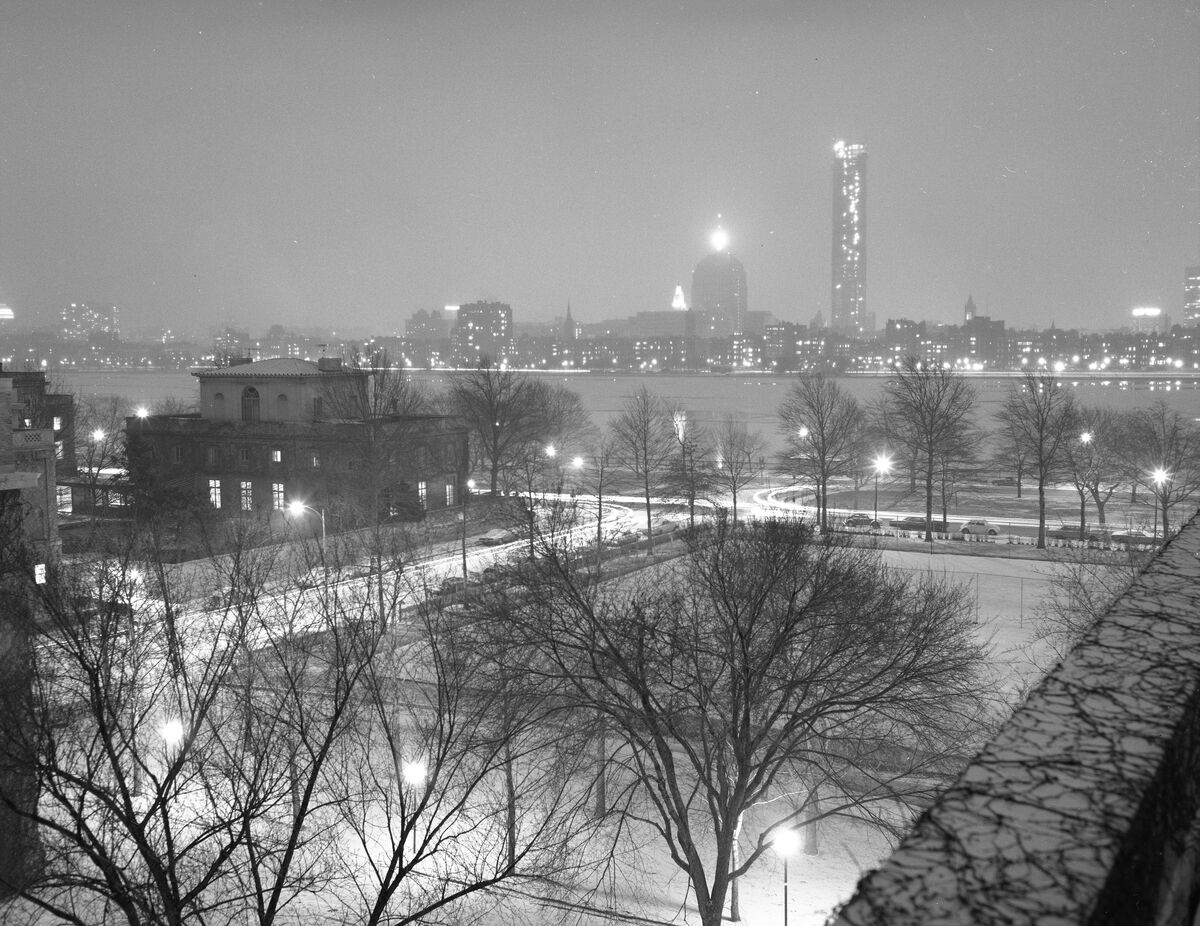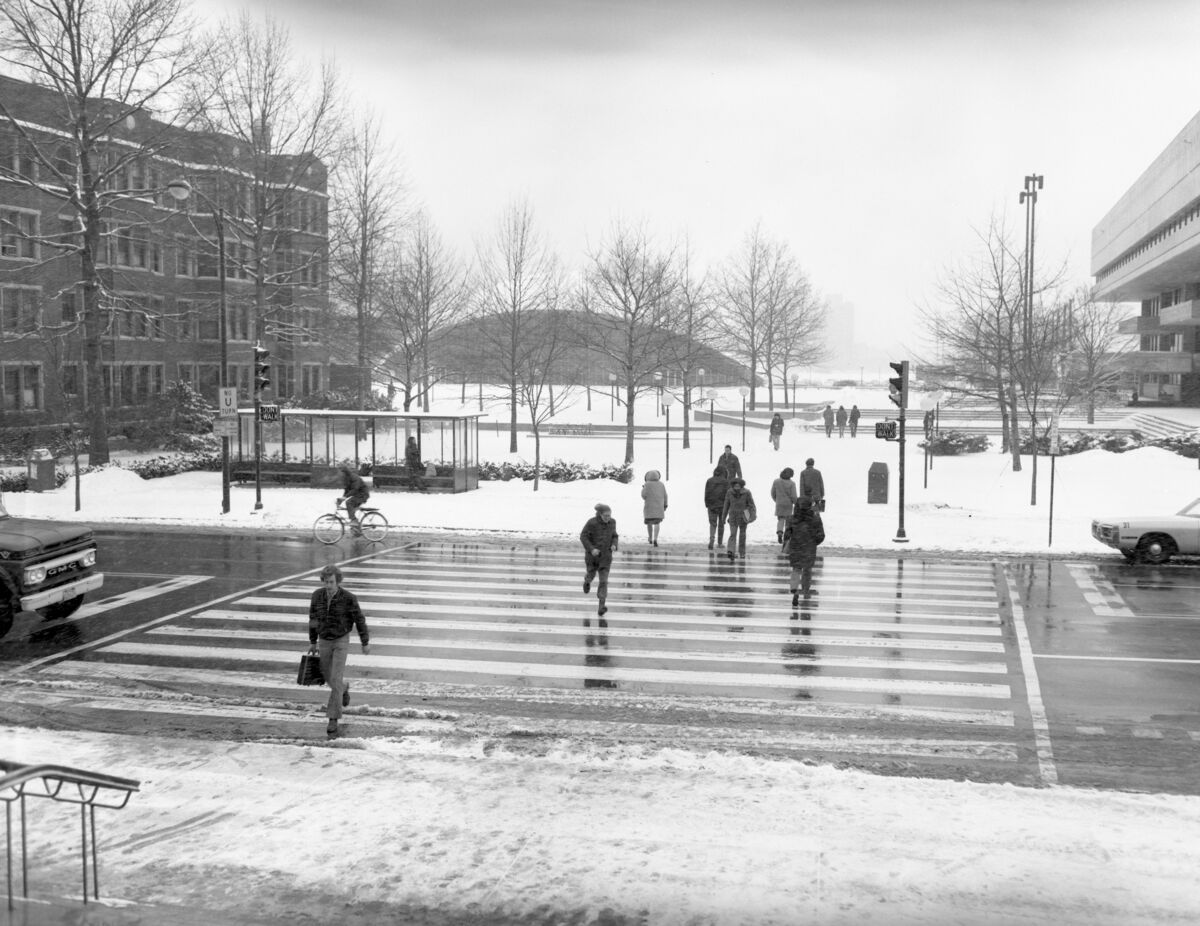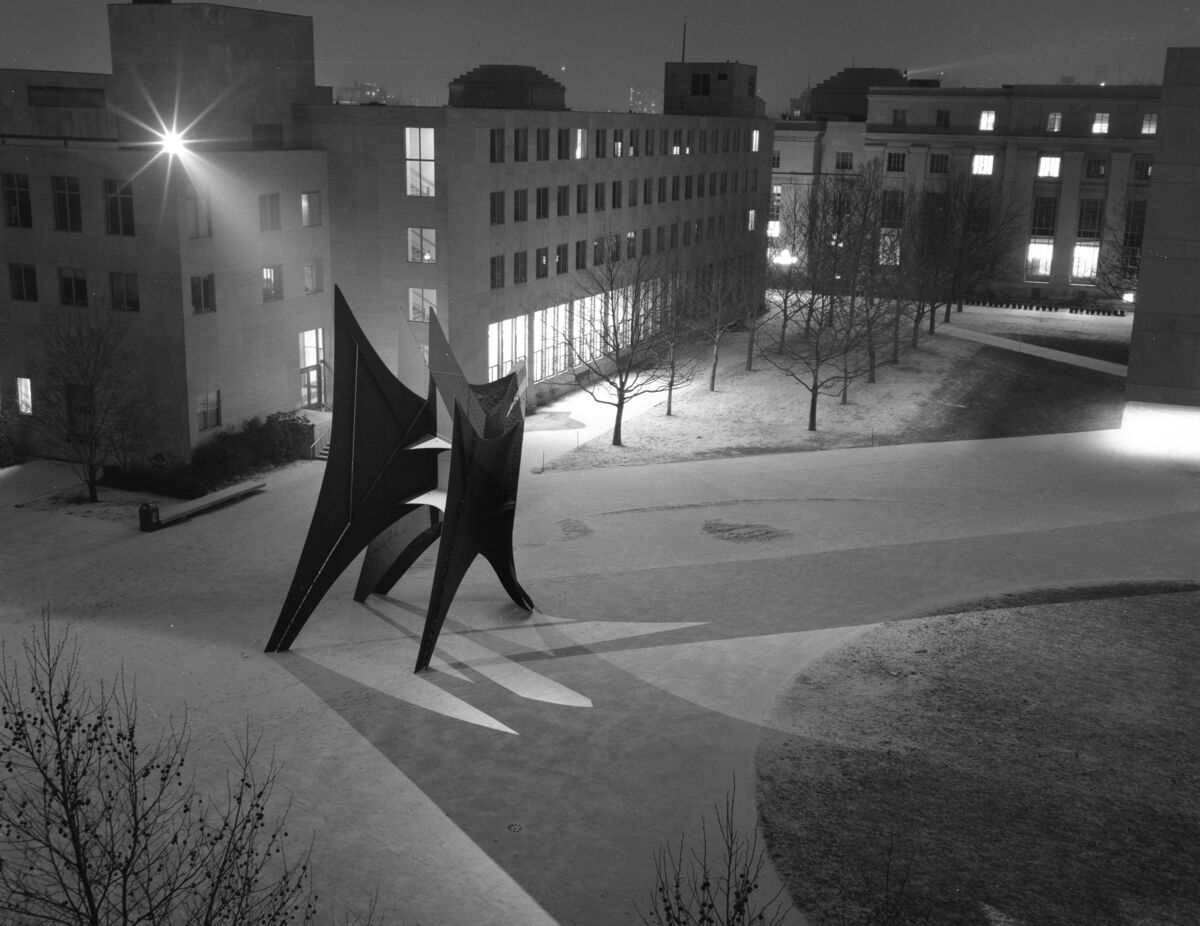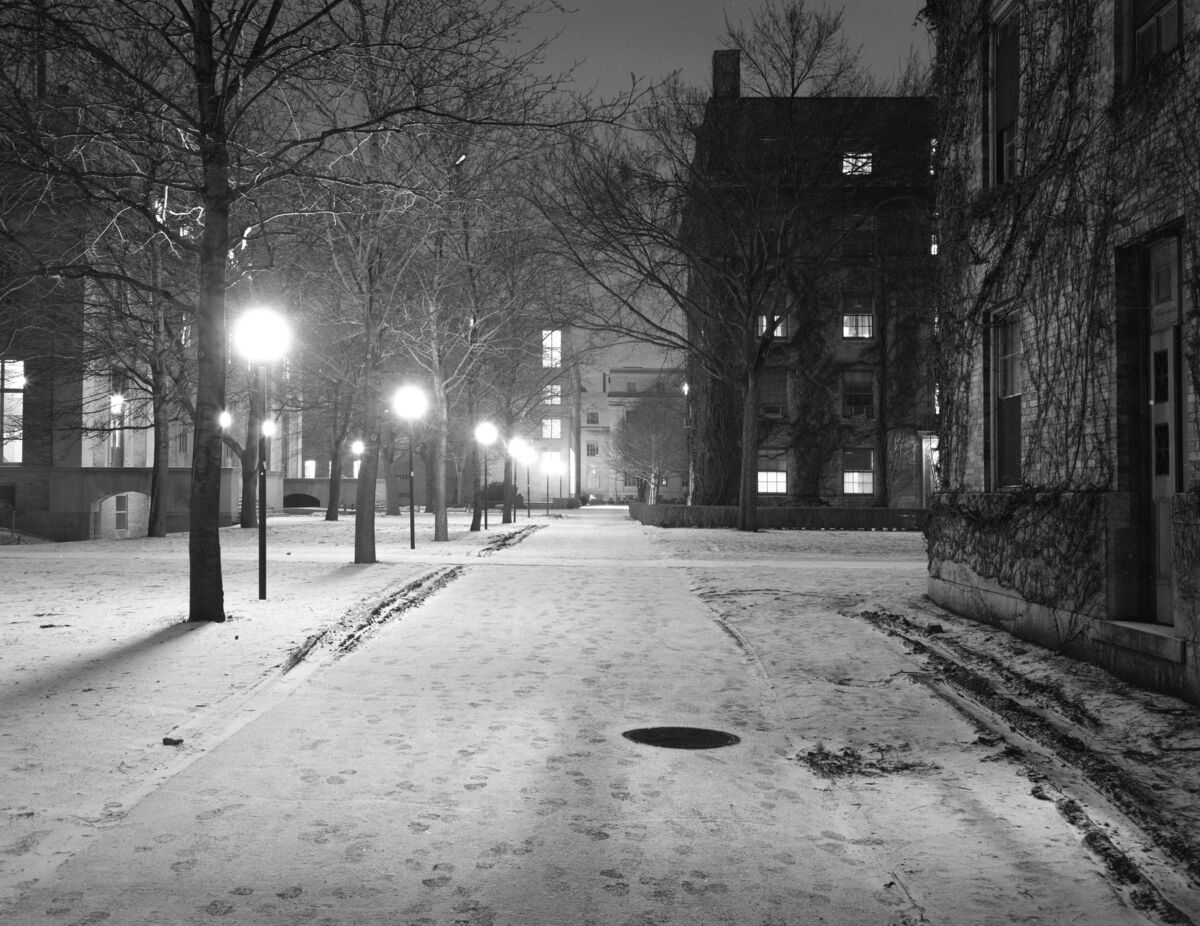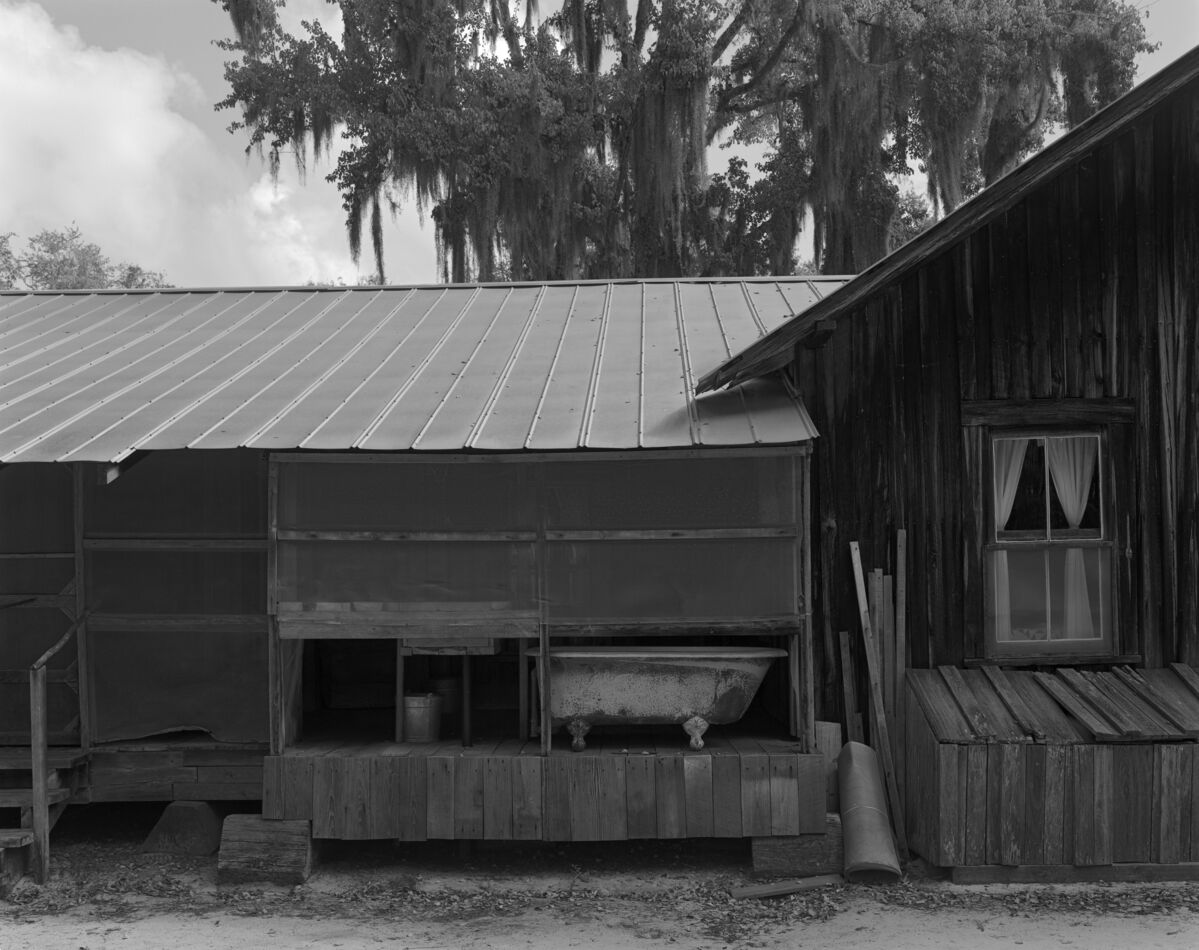4 X 5 Film Photography
Feb 20, 2024 16:54:45 #
dbrugger25
Loc: Raleigh, NC
When I was a teen, I owned Graphex Crown Graphic 4 X 5 camera. I loved it because of the razor sharp black and white images and the versatility. Later, I traded it in for a Canon Pellix 35mm. BIG MISTAKE. Canon is a great brand buth the Pellix had to be one of the worst cameras on modern history.
I always wished I still had the Crown Graphic.
Well. I finally bought a used one on ebay and it should arrive in a few days. It is the only one I have seen that appears to be in very good condition.
I can calibrate the shutter using a solar cell and an oscilloscope or, at least document any shutter error.
Next, since I no longer have a darkroom, I will need a lightproof bag for loading the film and loading a lightproof developing tank. Can anyone give me advice about the best lightproof bag.
Next, I have two choices for making prints. I can scan the negatives to a digital file and make prints using Photoshop; or, I can make a lighted back for the camera and make prints the old fashioned way in developing solutions. I have a bathroom with no outside windows that I can set-up as a makeshift print darkroom.
I guess I am looking for suggestions.
Is there an Ugly Hedgehog section devoted to film photography. I also have a Rolleiflex twin lens that I will be using.
I am 79 years old and am on a nostalgia kick; trying to relive my long-lost youth. I guess I have too much free time in my life.
I always wished I still had the Crown Graphic.
Well. I finally bought a used one on ebay and it should arrive in a few days. It is the only one I have seen that appears to be in very good condition.
I can calibrate the shutter using a solar cell and an oscilloscope or, at least document any shutter error.
Next, since I no longer have a darkroom, I will need a lightproof bag for loading the film and loading a lightproof developing tank. Can anyone give me advice about the best lightproof bag.
Next, I have two choices for making prints. I can scan the negatives to a digital file and make prints using Photoshop; or, I can make a lighted back for the camera and make prints the old fashioned way in developing solutions. I have a bathroom with no outside windows that I can set-up as a makeshift print darkroom.
I guess I am looking for suggestions.
Is there an Ugly Hedgehog section devoted to film photography. I also have a Rolleiflex twin lens that I will be using.
I am 79 years old and am on a nostalgia kick; trying to relive my long-lost youth. I guess I have too much free time in my life.
Feb 20, 2024 17:46:47 #
A friends father had a Speed Graphic that I borrowed to take photos of the New York 64-65 World's Fair. I had my dark room set up in my parents basement and still have the Omega D2 enlarger. Sadly all my negatives have been lost. My first real camera othen Kodak brownies was a Yashica rangefinder camera, then a Practica that had Pentax mount lens. I still can't get all the features on these new digital cameras F stop, Shutter Speed, and ASA were what we used to determine our exposure, and focus was by eye or distance settings.
Feb 20, 2024 18:30:16 #
Ysarex
Loc: St. Louis
ChiefSki wrote:
I still can't get all the features on these new digital cameras F stop, Shutter Speed, and ASA were what we used to determine our exposure, and focus was by eye or distance settings.
I have 5 digital cameras that all have f/stops, shutter speed, and ASA (now ISO) and can be focused manually or by setting a distance on the lens.
Feb 20, 2024 18:33:07 #
Ysarex wrote:
I have 5 digital cameras that all have f/stops, shutter speed, and ASA (now ISO) and can be focused manually or by setting a distance on the lens.
Some of the newer lenses may be short on the distance scale. But yes all decent digital cameras can be operated fully manual.
Feb 20, 2024 19:03:19 #
Ysarex
Loc: St. Louis
dbrugger25 wrote:
Next, since I no longer have a darkroom, I will need a lightproof bag for loading the film and loading a lightproof developing tank. Can anyone give me advice about the best lightproof bag.
Changing bags for sheet film are a problem. You need to get the film into the holder and the darkslide in place without depositing any of the thousands of specs of dust and lint and hair etc. that's in the bag on the film. This is complicated by the fact that it's really easy for sheet film to pick up an electrostatic charge. I have been forced on occasion to load 4x5 film in a changing bag and I have been badly bitten. I guess I should have vacuumed it out a few more times?
You say you have a bathroom with no windows -- you should be able to make that dark. Work at night and turn off lights outside the bathroom. Load the film there as well as the daylight tank.
Daylight sheet film processing tanks are a problem. I doubt if anyone is still trying to design one that allows for intermittent agitation while evenly developing the film without streaks. One that rolls with constant agitation may be OK. When I used to use one that was designed for intermittent agitation what I did was use that dark bathroom and place the tank in a tray with the lid off. Then using my gloved hand I would reach into the tank and grab the film holder and manually agitate it -- that worked.
Bathroom hint: Fighting dust on larger film surfaces is a hassle. If a dark bathroom has a shower then run the hot water in the shower for a few minutes and get some moisture into the air, then wait a few minutes to load or dry film. That moisture will help settle out the dust and you'll have cleaner film.
Best of luck to you.
Feb 20, 2024 20:34:27 #
Feb 20, 2024 22:54:02 #
Once upon a time there was an inflatable changing bag that formed a box. You might want to construct a light tight box and sacrifice the sleeves from an outerwear jacket to put on the sides.
Feb 21, 2024 00:24:10 #
dbrugger25 wrote:
When I was a teen, I owned Graphex Crown Graphic 4... (show quote)
Why create a makeshift enlarger from your camera when decent real enlargers are free for the taking. Just gave away a perfect D2V with carriers and lenses. You may hafta drive a half day each way but its worth it. My D2V went by car from NY to Indiana.
If (big if) you can find one, there used to be enlarging conversion kits for Graflock backs. Harder to find but at least its reasonable to pack and ship, although probably not free for the taking.
While very patiently waiting for either of the above, just get a scanner. You might love it.
Feb 21, 2024 01:55:51 #
therwol
Loc: USA
Ysarex wrote:
Changing bags for sheet film are a problem. You ne... (show quote)
Back in the day, I did some 4x5 with a Crown Graphic. I loaded and unloaded the film in 1. A dark bathroom in my parents' house. No window. Light off in the adjacent room and towel under the door. 2. My actual darkroom in the same house. Same setup. 3. The closet in my dorm room after I went off to college. Same setup. Film is very sensitive to light. Absolute darkness is a must.
I had a film pack adaptor and used pre-loaded film packs on occasion. You can't buy them any longer. There was no need for a darkroom to load the film, but the film inside was extremely thin and prone to curling after being processed.
I used a daylight tank for developing and can confirm the issue of streaking of the negatives. You couldn't invert the tank. The hole on top was open. With practice and experimentation, I figured out how to minimize or eliminate the streaking. I can't remember what I did 50 years later.
I tried developing in a print drum. Results varied.
There are a lot of enlargers out there, but shipping something like an Omega D2 would cost far more than the enlarger is worth. If you want to go that route and set up a full darkroom, you'll have to look to see what's out there within driving distance.
The only film scanners I know of that can handle 4x5 are the Epson V7xx and V8xx flatbed scanners. (Someone is bound to mention other possibilities.) I scanned all of my 4x5 negatives, some color. Results are good, and you can view the scans on a computer. I think that it's hard to capture everything that's in a 4x5 negative without creating huge file sizes with a scanner. But that is not always going to be necessary.
These photos were taken in 1972 with my Crown Graphic. You'll notice a dark haze on top of the outdoor picture. This is from uneven development in my daylight tank. All of these were scanned at 1200 dpi. I could have gone higher, but the main reason they may not seem as sharp as they should is that it was actually snowing when the night pictures were taken, and since they were time exposures (I think about 20 seconds counted in my head), there is a subtle haze over the pictures. Yes, you can see some crud on some of the pictures. I haven't had time to go back and clean them up.
If you want my honest opinion, I think that large wet prints I made from my negatives were sharper and showed more detail, but I'm not going to scan these over. I have other priorities.
Feb 21, 2024 02:18:53 #
Ysarex wrote:
Changing bags for sheet film are a problem. You ne... (show quote)
Bottom line is that a Graphic is not a stand alone device. Its just part of a system, which includes a proper darkroom. Same as digital cameras cannot stand alone but need a PC.
The darkroom is really the principal means of imaging. The camera is just a peripheral. To own just the camera is much like owning just a scanner. Not especially useful in isolation.
Pre-digital I always saw my camera as simply an input device for my real work area, the darkroom. My ONE reason for using medium to large cameras was never some quest for IQ. It was just a way to make darkroom work easier and less fussy.
Amatuers are sadly waaaaay too worshipfully focused on *The Camera* (that includes its lenses). That is how we wind up with SOOC fanatics (camera skill is their "all in all") and likewise film dabblers trying to live by *The Camera* alone without a lab. Try running a restaurant with no kitchen. You can show off your fancy dining room and your book-bound menus, but patrons are expecting some food and you will just look worse than foolish.
Feb 21, 2024 04:15:41 #
ChiefSki wrote:
A friends father had a Speed Graphic that I borrow... (show quote)
Why not donate that D2 to the OP ?
Not just talk, I walk the walk. Donated my D2V (with plenty goodies) last year.
The trip is under 1000 miles one way. OP can escape from Upstate winter for a day or two !
IIRC, Troy NY to Hotlanta is a full 1000 miles.
Feb 21, 2024 04:44:23 #
User ID wrote:
Why create a makeshift enlarger from your camera w... (show quote)
I just rethunk my entire thinking. Get away from sheet film. Just get a roll holder for the Graflok. Your lens is 1.3X tele for 6x9 rollfilm. You could also keep watch for a 90mm. That would be a short normal. 6x9 normal is 105.
With rollfilm you can easily process and scan your own film, and its cheaper. 6x9 is a BIG neg. 4x5 is not a visible IQ upgrade over 6x9. If youre reeeeeeally lucky, someday youll get a Horseman 6x12 rollfilm back to go with the 90mm lens :-)
I do NOT make schidt up. I dont recommend anything unless Ive Ben Dare with Don Datt !
Feb 21, 2024 05:21:42 #
dbrugger25 wrote:
br br . . .Next, since I no longer have a darkro... (show quote)
1) You may not need a changing bag. Since you have a bathroom with no windows it is much easier to just cover the edges of the doorway to make it light-tight. Use that for loading your film holders, and then later go back in to unload the exposed film and put it into a daylight developing tank.
Once the film is in the tank you can process the film under normal room light.
2) Your bathroom probably has an exhaust fan and hot and cold running water. I’d get a plastic bucket or something similar, with a flat bottom, and do my developing in that, rather than trying to get the developing tank to sit flat in my bathroom sink. Drips and splashes stay in the bucket until I flush them down the drain. If you can fit a small table in there, you’ll have a tiny, but functional workspace. That table might fit in a bathtub or shower stall.
3) 4x5 enlargers are rather expensive these days, mostly due to shipping costs. Instead of that, look for a ‘Graflarger back’. Remove the ground glass on your Crown Graphic and insert this device instead.
https://www.ebay.com/itm/364122263519?
It is a fluorescent light and negative carrier which goes on the camera. The ballast and transformer are in a second ( heavier) unit that sits on the table. With the camera on a copy stand you have an enlarger. You can fabricate something similar with an LED screen and a negative carrier from a Besseler or Omega enlarger the negative carriers are aluminum and can be cut down to a smaller size. Either fluorescent or LED will run at a much cooler physical temperature than an incandescent bulb, but the color temperature of either of these is not compatible with multigrade enlarging paper.
If you want to fabricate an incandescent ‘head’ for your camera/enlarger I’d suggest starting with a large clamp light and reflector from a hardware store, and a PH 211 or PH212 enlarger bulb from B&H photo. The smaller 75 watt bulb should be plenty bright, and you can use this with the polycontrast/multicontrast filters and photopaper sold by Ilford.
4) With black and white film, any of these light sources make nice backlights for copying the negative onto a digital camera. If you use color film then use either a tungsten bulb or an LED panel which has a very high CRI ( Color Rendering Index) of 95 or higher. The graflarger back isn’t meant for color.
5) Look for a 120 roll film back for your press camera. These come in 3 sizes: 6x6 (12 exposures), 6x7 (10 exposures), and 6x9 cm (8 exposures per roll. You can load a fresh roll of film in daylight and process it alongside the film from your Rollei.
6) Yes. UHH has both a film area and a Black and white section. The latter deals with both film and digital originals.
Enjoy your return to the darkroom
Feb 21, 2024 07:42:49 #
I have a Speed Graphic (flashbulb sync only) and a Crown Graphic (that also has X sync). I use both occasionally.
Load and unload your film backs in absolute darkness, but I've had no issues using a changing bag. Daylight tank for developing, gently agitate 10-15 seconds every minute for no streaks.
I scan the negatives at 3600 DPI on an Epson scanner, and Digital ICE removes ALL the dust spots.
Transparencies get mailed to a commercial lab for processing only. I scan them myself when they are returned.
Load and unload your film backs in absolute darkness, but I've had no issues using a changing bag. Daylight tank for developing, gently agitate 10-15 seconds every minute for no streaks.
I scan the negatives at 3600 DPI on an Epson scanner, and Digital ICE removes ALL the dust spots.
Transparencies get mailed to a commercial lab for processing only. I scan them myself when they are returned.
Feb 21, 2024 09:27:34 #
dbrugger25 wrote:
When I was a teen, I owned Graphex Crown Graphic 4 X 5 camera. ...
I used a Zone VI 4x5 camera for several years. I sold it to KEH a couple of years back.
After three moves, I could not accommodate a regular 4x5 enlarger and conventional darkroom so got an Epson V750. I continued developing 4 shots at a time in 5x7 trays.
I always scanned at 2400 ppi. File size was not a problem because I didn't take a lot of images over the years. Nobody would ever see the 100% view but 2400 ppi made it easier to remove blemishes, usually the only post processing I did. I never printed larger than 13x19 or 17x22.
Moiré might show up on the monitor (see below) but not in the prints themselves.
If you want to reply, then register here. Registration is free and your account is created instantly, so you can post right away.



